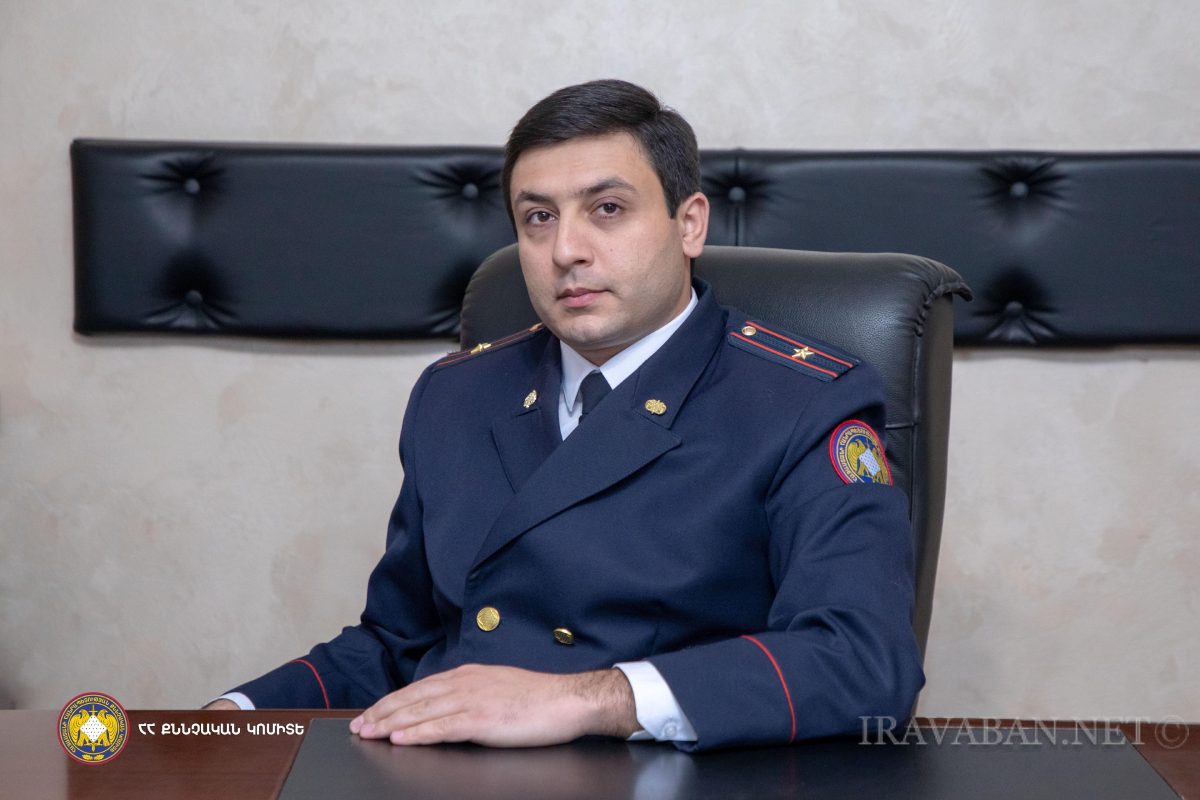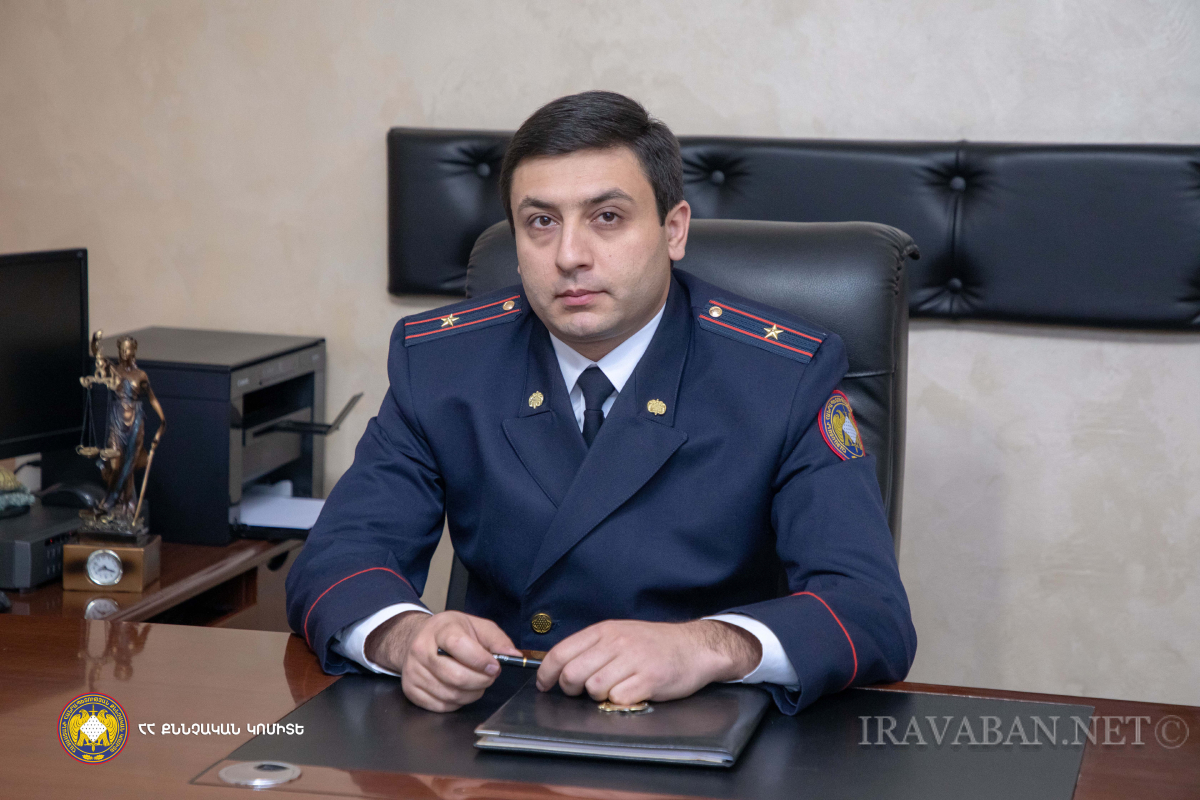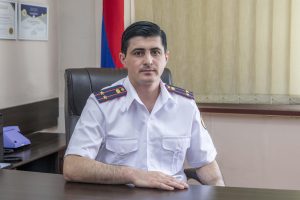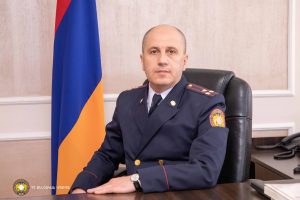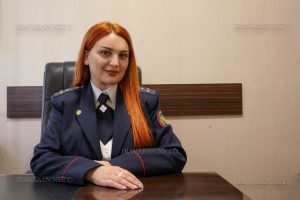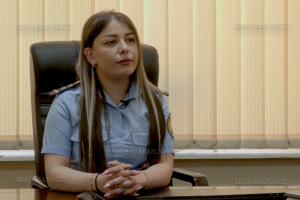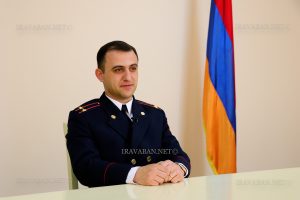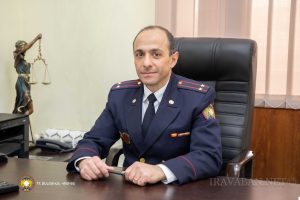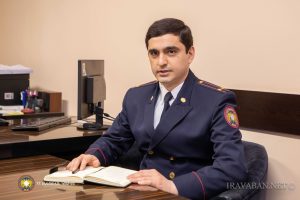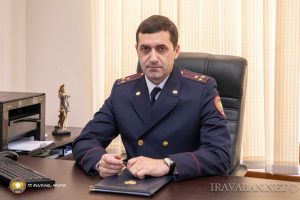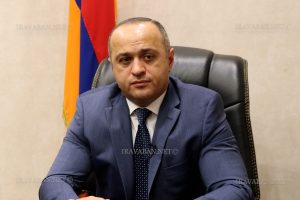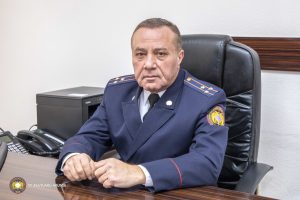The most dangerous in Yerevan are Bagratunyats, Tigran Mets, Arshakunyats, Gai, Myasnikyan, Baghramyan avenues, Khanjyan, Sebastia, Artashisyan, and Agatanghehosi streets, where the most frequent traffic crimes are committed. Gor Tatevosyan, Head of the Division of Investigation of Traffic Crimes of Investigative department of the Investigative Committee told in the framework of “The Investigator Presents” series of interviews of Iravaban.net.
– Mr. Tadevosyan, can you specify the characteristics of the cases examined in your division?
– The peculiarity of the proceedings investigated in the Traffic Police Department is that only traffic offenses as well as criminal proceedings, as well as driving vehicles by persons deprived of the right to drive vehicles or having that right suspended or drunk (not sober) by such persons or persons who do not have the right to drive vehicles, or refusing or avoiding a sobriety test are investigated in this division. I would also like to mention that the DITC division is the only one in the city of Yerevan and in the Republic of Armenia as a separate division.
– What kind of dynamics of traffic crimes have you noticed in the city of Yerevan this year? What are the main causes of serious bodily injury or death incidents in Yerevan?
– In 2023, the number of traffic crimes increased compared to the previous year, and the number of traffic accidents resulting in death also increased.
The main causes of accidents with serious bodily injuries or deaths are very different and each case must be evaluated separately, because the conditions of their execution are always different, but the main reason is the increase in the number of vehicles and the inattention of citizens (pedestrians, drivers), in some cases also incomplete furnishing of streets with measures ensuring traffic safety.
– Which streets of Yerevan are the most dangerous, where traffic crimes are most often committed and what is the reason for this?
– The most dangerous are Bagratunyats, Tigran Mets, Arshakunyats, Gai, Myasnikyan, Baghramyan avenues, Khanjyan, Sebastia, Artashisyan and Agatanghegos streets. If you paid attention, we are talking about the busiest and the most overloaded streets of the capital. The number of vehicles in use in the city of Yerevan has increased dramatically recently, which, I think, is obvious even to the naked eye for the residents of Yerevan. It has two main reasons. First, a large number of cars were imported and sold in Armenia, besides; the vehicles of our compatriots, who were moved to Armenia and the capital as a result of the forced deportation of Artsakh residents, were added. In such conditions, all traffic participants, both drivers and pedestrians, are required to be twice as vigilant and careful.
– What tools does the Investigative Committee have to influence traffic regulation and prevent accidents and collisions with serious consequences?
 – The Investigative Committee, represented by the Division of Investigation of Traffic Crimes, frequently addresses petitions to various competent state bodies, which mostly give positive results. I can especially mention the petitions addressed to the Yerevan Municipality, the majority of which had and are having positive results due to the consistent approach of the Municipality. For example, as a result of our petitions, traffic lights were installed in different streets of Yerevan, pedestrian crossings with artificial humps, parts separating the opposite lanes of the streets were fenced, and currently, again based on our petitions, the Yerevan Municipality is discussing iron barriers near the sidewalks, installing rubber barriers on street markings and other issues in different streets of Yerevan.
– The Investigative Committee, represented by the Division of Investigation of Traffic Crimes, frequently addresses petitions to various competent state bodies, which mostly give positive results. I can especially mention the petitions addressed to the Yerevan Municipality, the majority of which had and are having positive results due to the consistent approach of the Municipality. For example, as a result of our petitions, traffic lights were installed in different streets of Yerevan, pedestrian crossings with artificial humps, parts separating the opposite lanes of the streets were fenced, and currently, again based on our petitions, the Yerevan Municipality is discussing iron barriers near the sidewalks, installing rubber barriers on street markings and other issues in different streets of Yerevan.
– There are many cases of traffic crimes, which cause a problem of insufficient resources. To what extent is the personnel potential of the department sufficient to carry out such a huge amount of work, and what legislative changes are being made to increase the efficiency of crime detection and preliminary investigation?
– As I already mentioned, the Department of Criminal Investigation is the only specialized department for the investigation of such cases in the city of Yerevan, and the city of Yerevan is the most populated in the Republic of Armenia. Therefore, it is legitimate to have a heavy workload for the DITC division. I should mention that we have vacant positions of investigators in the department, and under these conditions, there are 100 or more criminal proceedings in the proceedings of each investigator. In such conditions, naturally, investigators work with an overloaded schedule. The personnel policy conducted by the leadership of the investigative committee is aimed at filling vacant positions with qualified personnel, and I am sure that as a result of this, we will have a certain reduction in workload. In addition, the Investigative Committee initiates certain legislative changes in this area, which in the end should also lead to a reduction in workload and, therefore, to an increase in the efficiency of the preliminary investigation.
– As a representative of the preliminary investigation body and a more specialized specialist in the field of investigation of traffic crimes, how do you evaluate the level of knowledge and literacy of traffic rules, especially among the drivers and pedestrians? What do you think needs to be done in this area?
– In general, our society, both the drivers and pedestrians, have a very low level of knowledge in this respect. For example, pedestrians mostly cross streets in unauthorized places. Moreover, even pedestrians do not observe the traffic rules in the conditions of the decisions on imposing an administrative penalty on them by the patrol officers. Meanwhile, in foreign countries, our citizens strictly observe these rules so as not to be fined. This is a problem related to mentality and we need to change the way of thinking and behavior in terms of the fulfillment of civil duties and general rules of coexistence in one’s own country.
The field of issuing driver’s licenses has been sufficiently tightened, which is already positive. Naturally, there is much to be done in this field. But the priority is to increase the level of public awareness through television and the Internet.
– Do you remember what your first internship was? What outcome did it have?
It is perhaps notable that the first case of my practice was a fatal traffic offense that went to trial and resulted in a guilty verdict. I think that every investigator is impressed by the previous case he/she has examined, and I am not an exception.
– You also held the position of Prosecutor of the Military Prosecutor’s Office of the Yerevan Garrison. The fields are somewhat different, how did that experience help you or is it helping you in your current job?
– You have noticed correctly, the fields are somewhat different, especially the types of crimes and their investigation methodology. However, after the work experience of the prosecutor, I also treat the preliminary investigation from that point of view, so that the completeness and legality of the preliminary investigation are ensured, for the invulnerability of the judicial decisions made. And after the practice of the military prosecutor, I look at the young people who are going through the proceedings purely humanely, from the point of view of their being or not being subject to conscription.
– To what extent are you able to combine the service with personal family life, taking into account the overload?
– The word “combine”, although it is not appropriate, because both I and most of the employees of the law enforcement system devote most of their daily life to work, up to 12 and sometimes even more hours, and family members have to adapt to the situation.
However, if we have assumed responsibility, then we must bear it with honor. Because I believe that public service in Armenia, especially ensuring law and order in the country, is not just a job, but a calling and a mission. And if a person is not ready for such sacrifices, it is better not to try to enter this system at all.
This initiative, implemented in cooperation with the RA Investigative Committee and the Iravaban.net website, aims to properly present to the public the main directions of the work carried out by the preliminary investigation body, to reflect on the peculiarities of pre-trial proceedings and other issues of public importance.
